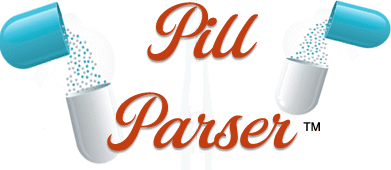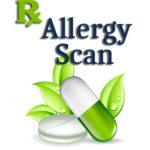Most people know to avoid allergens in foods — but few realize that prescription and over-the-counter medications can contain the same hidden ingredients that trigger reactions. These allergens often appear under unfamiliar chemical names or as “inactive” ingredients that seem harmless. Understanding where they hide can help you make safer choices and start more informed conversations with your pharmacist or doctor.
🥛 1. Milk-Derived Ingredients
Milk proteins and sugars are among the most common hidden allergens in pharmaceuticals.
Look for: lactose, lactose monohydrate, whey, casein, sodium caseinate, magnesium stearate (if animal-derived).
-
Used as: fillers, stabilizers, or flow agents in tablets and capsules.
- Found in: inhalers, allergy medications, and even some antibiotics.
💡 Tip: Ask whether your medication is available in a lactose-free formulation or a liquid alternative.
🍳 2. Egg-Based Components
Albumin (egg protein) is sometimes used as a stabilizer in vaccines and certain biologic drugs.
-
Found in: flu vaccines, some anesthetics, and older formulations of topical creams.
-
Although reactions are rare, patients with severe egg allergy should always inform their provider before vaccinations or surgeries.
🌿 3. Gelatin & Animal-Derived Capsules
Gelatin, made from animal collagen (usually beef or pork), is a common capsule material.
-
Used in: softgels, coated tablets, and vaccine stabilizers.
-
Alternatives: vegetarian capsules (made from cellulose or HPMC).
⚠️ If you avoid pork or beef for medical, allergic, or religious reasons, look for “vegetarian capsule” or “plant-based capsule” on the label.
🌾 4. Wheat, Gluten & Starch Fillers
Wheat starch, pregelatinized starch, and dextrins can contain trace gluten proteins.
-
Found in: older or generic oral medications, supplements, and chewables.
-
“Gluten-free” labeling is voluntary — so always verify with the manufacturer if you have celiac disease or gluten intolerance.
🥜 5. Peanut & Soy Derivatives
Some topical creams, vitamin capsules, and injectables use peanut oil or soy lecithin as carriers or emulsifiers.
-
Found in: progesterone oil injections, vitamin E softgels, some inhalers.
-
Soy may also appear as glycine max, lecithin, or hydrogenated soybean oil.
🐟 6. Fish & Shellfish Sources
Fish oil (omega-3), chitosan (from shellfish), and certain marine-based stabilizers can trigger reactions.
-
Found in: supplements, topical ointments, and sustained-release coatings.
-
Always check for marine-derived ingredients if you have seafood allergies.
🌽 7. Corn-Based Fillers & Sugars
Corn starch, dextrose, and maltodextrin are among the most widely used tablet fillers.
-
Generally considered safe, but can cause reactions in people with severe corn allergies.
-
Also used in IV solutions, syrups, and chewable tablets.
🌈 8. Artificial Dyes & Preservatives
Colorants and preservatives can cause unexpected sensitivities — especially in children.
Watch for: FD&C Yellow No. 5 (tartrazine), Red 40, Blue 1, sodium benzoate, parabens.
-
Found in: chewable tablets, liquid medicines, flavored suspensions.
-
Clear or dye-free formulations are often available on request.
💧 9. Flavorings & Sweeteners
Artificial flavors, sorbitol, or aspartame are sometimes overlooked.
-
Sorbitol and mannitol may trigger GI upset in sensitive users.
-
Aspartame contains phenylalanine — a risk for individuals with PKU (phenylketonuria).
🧴 10. Topical and Injectable Triggers
Even non-oral products can hide allergens:
-
Latex in vial stoppers or syringe plungers.
-
Polysorbates or polyethylene glycol (PEG) in creams and injections.
-
Fragrances in topical medications.
🩺 What You Can Do
-
Ask questions — request the full ingredient list or NDC number.
-
Use reliable sources like PillParser.com or the FDA’s DailyMed to check ingredients yourself.
-
Consult your pharmacist before switching brands or dosage forms.
-
Report reactions to your healthcare provider and the FDA MedWatch system.
💡 Remember: “Inactive” doesn’t mean “safe for everyone.” Awareness is your best defense.


